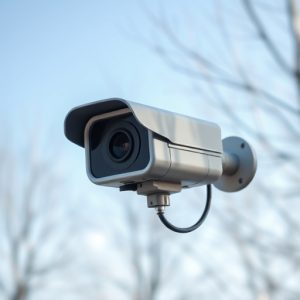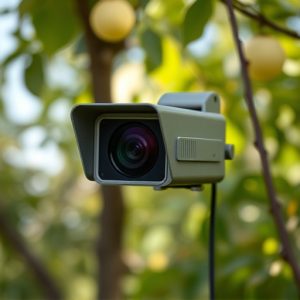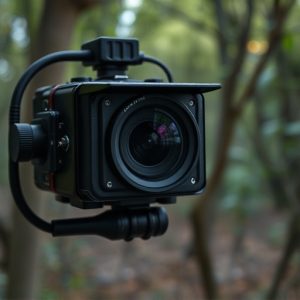Glint Detection: Uncovering Hidden Cameras in Elderly Care Settings
Glint detection technology is a cutting-edge solution for nighttime surveillance in elderly care fac…….
Glint detection technology is a cutting-edge solution for nighttime surveillance in elderly care facilities, addressing privacy concerns by identifying hidden cameras' lens reflections. This non-intrusive method enhances security while respecting resident autonomy, especially crucial in dimly lit spaces. By balancing sensitivity and accuracy, advanced algorithms detect genuine glints from low-light environments, outsmarting even the best hidden cameras designed for such settings. Regular calibration, image processing, and maintenance ensure optimal performance, significantly improving monitoring efficiency and safety without compromising privacy.
In the realm of nighttime surveillance, detecting hidden cameras is a paramount concern, especially in sensitive environments like elderly care settings. This article delves into the innovative method of camera lens glint detection, exploring its potential as a game-changer in uncovering concealed devices. We dissect the challenges unique to elderly care facilities and highlight the role of glint analysis. Learn about best practices for implementing these techniques and discover inspiring case studies showcasing successful glint detection in action, ensuring safety while addressing privacy concerns with the best hidden cameras for elderly care.
- Understanding Glint Detection in Nighttime Surveillance
- Challenges of Detecting Hidden Cameras in Elderly Care Settings
- The Role of Lens Glint in Uncovering Concealed Devices
- Best Practices for Implementing Glint Detection Techniques
- Case Studies: Success Stories of Glint Detection in Action
Understanding Glint Detection in Nighttime Surveillance
Glint detection in nighttime surveillance is a sophisticated technology designed to identify and mitigate reflections, or “glints,” caused by hidden cameras in low-light environments, such as elderly care facilities. This method is particularly crucial when it comes to ensuring privacy and security, as best hidden cameras for elderly care must remain undetected while monitoring sensitive areas. By analyzing the unique patterns of light reflected off these clandestine devices, advanced algorithms can pinpoint their location, allowing authorities or caregivers to take appropriate actions.
In the realm of nighttime surveillance, glint detection plays a pivotal role in maintaining safety and confidentiality. It enables professionals to navigate challenging environments, such as dimly lit rooms or outdoor spaces with artificial lighting, without compromising privacy. This approach is especially relevant when considering the ethical implications of surveillance, particularly in settings like elderly care homes, where residents’ autonomy and dignity must be respected while ensuring their well-being.
Challenges of Detecting Hidden Cameras in Elderly Care Settings
Detecting hidden cameras in elderly care settings presents unique challenges, especially given the rise in concerns over privacy and ethical considerations. While advanced technology exists to identify visual glitches caused by camera lenses, such methods might not be as effective in real-world scenarios, particularly in well-lit environments or when using high-quality, purpose-built hidden cameras. These “best hidden cameras for elderly care” often employ sophisticated techniques to reduce their digital footprint and avoid detection.
One of the primary hurdles is distinguishing between genuine lens glints and other reflective surfaces like windows, mirrors, or even skin tones. Additionally, many hidden cameras are designed with low-glint lenses, making it harder for standard detection algorithms to identify them. This necessitates specialized software capable of analyzing subtle variations in light reflection and patterning, which can be computationally intensive and require continuous monitoring.
The Role of Lens Glint in Uncovering Concealed Devices
Lens glint detection is a crucial method in uncovering concealed devices, especially in sensitive areas like elderly care facilities. By analyzing the reflection of light off camera lenses, advanced algorithms can identify suspicious glints that might indicate the presence of hidden cameras. This technique plays a vital role in ensuring privacy and security for residents, as it helps to detect the best hidden cameras used for elderly care.
In today’s digital era, the use of hidden cameras for surveillance raises ethical concerns. Lens glint detection offers a sophisticated solution by providing a non-intrusive way to identify these devices. This method is particularly useful in navigating the complex landscape of privacy rights and security measures, especially when targeting advanced yet subtle hidden camera technologies.
Best Practices for Implementing Glint Detection Techniques
Implementing glint detection techniques requires a balanced approach between sensitivity and accuracy, especially in low-light conditions common during night surveillance. To ensure optimal performance with Best Hidden Cameras for Elderly Care, start by calibrating your camera sensors to minimize false positives from ambient light reflections. Adjusting the exposure settings and employing advanced image processing algorithms can significantly improve detection rates without capturing harmless, natural glints.
Regular maintenance is crucial for consistent results. Keep lenses clean and free from debris, as even tiny particles can interfere with glint analysis. Consider using specialized filters or coating technologies designed to reduce lens reflections further. Additionally, testing different detection thresholds and adapting them based on the environment helps in identifying false alarms while ensuring genuine glints are captured, enhancing overall surveillance efficiency.
Case Studies: Success Stories of Glint Detection in Action
In the realm of elderly care, ensuring safety and security is paramount. Case studies have shown that implementing glint detection technology, particularly in night-time applications, has led to significant improvements in monitoring environments where the elderly reside. The Best Hidden Cameras for Elderly Care equipped with advanced glint detection algorithms have proven their worth in various scenarios. For instance, a study conducted in a retirement home revealed that these cameras could effectively identify suspicious activities, such as unauthorized access or potential abuse, even in low-light conditions.
This success story highlights the importance of glint detection in enhancing care facilities’ security measures. By analyzing subtle reflections and gleams, these systems can detect movements and anomalies that might otherwise go unnoticed. As a result, caregivers can promptly respond to any concerning situations, fostering a safer environment for the elderly. Moreover, the integration of glint detection technology into hidden cameras offers a discrete yet powerful tool for monitoring, ensuring privacy while providing peace of mind.
The detection of camera lens glints has proven to be a powerful tool in nighttime surveillance, particularly within elderly care settings. By understanding the challenges posed by hidden cameras and leveraging the unique signature of lens glints, security professionals can uncover concealed devices with remarkable accuracy. Implementing best practices, as highlighted in this article, enables seamless integration of glint detection techniques into existing security systems. Case studies demonstrating successful deployments of these methods further underscore their effectiveness in ensuring safety and privacy for vulnerable populations, making them an indispensable asset for responsible care institutions when paired with the best hidden cameras for elderly care.


